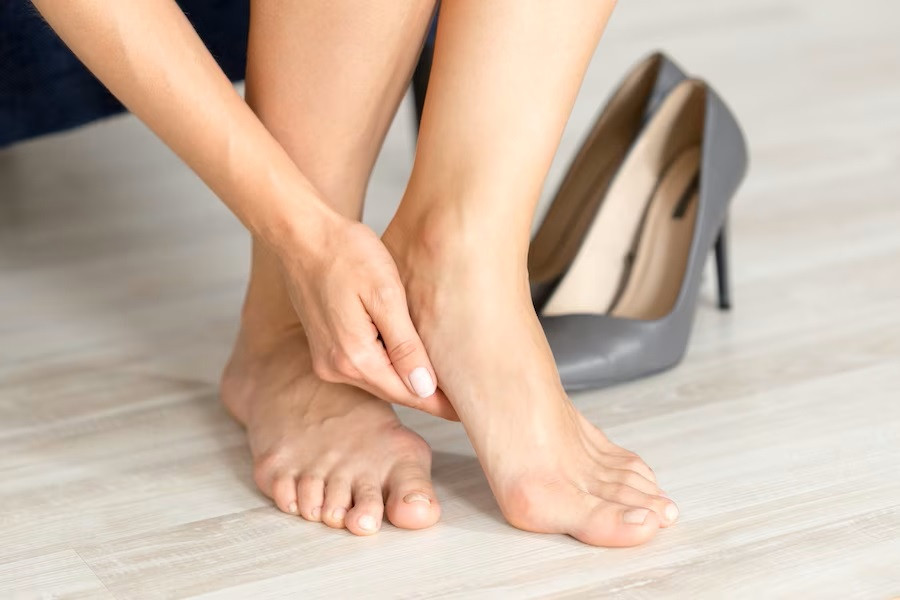Taking care of a baby after giving birth can put significant strain on the wrists and the body as a whole. Breastfeeding, carrying, and changing diapers often require the use of hand and arm muscles, as well as maintaining good body posture.
When movements are not done correctly or without adequate rest, you may experience stress and tension in the wrists and other areas of the body. One common condition experienced by mothers after giving birth is called mommy wrist.
What is Mommy Wrist?
Mommy wrist is a term used to describe a condition that occurs in the wrists of mothers after giving birth. This condition is known medically as Tenosynovitis de Quervain.
Tenosynovitis de Quervain occurs when the tendons along the thumb side of the wrist become inflamed and swollen. These tendons are typically responsible for moving the thumb. During inflammation, these tendons narrow, causing swelling, irritation, and pain in the wrist area.
Tenosynovitis de Quervain can be caused by overuse of the wrists, such as when carrying a baby or performing activities that involve repetitive wrist movements. Additionally, hormonal changes during pregnancy and childbirth can also be contributing factors.
Read more: Get to Know What is Diastasis Recti After Having Birth
Signs of Mommy Wrist
Mommy wrist or Tenosynovitis De Quervain is usually characterized by several symptoms, including:
- Pain on the thumb side of the wrist that may appear either gradually or suddenly
- Pain starts in the wrist and can travel up the forearm, and it's worse when you use the thumb or wrist
- Swelling on the thumb side of the wrist that can be seen and felt when touched
- A catching or snapping sensation when moving the thumb
- Trouble moving the thumb and wrist due to pain and swelling
The symptoms are usually aggravated when you tilt or bend your wrist towards your little finger, grip with your hand, or rotate or squeeze your hand
Managing Mommy Wrist
There are several ways to manage wrist pain caused by Tenosynovitis de Quervain, including:
- Resting the hand: Avoid repetitive thumb movements and strong gripping to reduce tendon irritation. Sufficient hand rest can allow the wrist to recover more quickly.
- Using anti-inflammatory drugs: Using anti-inflammatory drugs such as ibuprofen and acetaminophen can help reduce pain and inflammation. Meanwhile, topical medications can be used to relieve pain and symptoms.
- Adjusting hand use: You may need to change the way you use your hand, such as by avoiding movements that trigger pain or reducing pressure on the wrist to reduce perceived symptoms.
Read more: Tips For Re-exercising After Giving Birth
- Getting corticosteroid injections: Direct corticosteroid injections into the affected area can effectively reduce or even eliminate the perceived symptoms.
- Using braces: Braces can support and reduce symptoms by limiting movements that trigger tendon irritation. Braces are usually available in ready-to-use versions or need to be fitted by healthcare professionals.
- Physical therapy: In addition to the above treatments, you also need to undergo stretching exercises to help improve hand flexibility and reduce pain.
Basically, the choice of treatment and care for mommy wrist depends on the severity of the perceived symptoms. In most cases, symptoms can be relieved with non-surgical treatment. However, if the condition has worsened, the doctor may recommend surgery to release the inflamed tendons through a small incision in the affected area.
After giving delivery, seek additional medical advice from a physician if you have mommy wrist symptoms. Your doctor can help you choose the best course of action for your needs. You can either visit a doctor or make use of the consultation features that are available in the Ai Care application
Want to know information about other diseases? Click here!
- dr. Monica Salim
Korin Miller (2023). I had "mommy wrist" and didn't even know it existed. Here are some ways to find relief. Available from: https://www.babycenter.com/baby/postpartum-health/mommy-wrist_41001344
John M. Erickson, MD (2018). What Is Mommy’s Wrist?. Available from: https://www.assh.org/handcare/blog/what-is-mommys-wrist
HSE IE (2022). Thumb and wrist pain after having a baby. Available from: https://www2.hse.ie/conditions/thumb-wrist-pain-after-baby/
Mayo Clinic (2022). De Quervain tenosynovitis. Available from: https://www.mayoclinic.org/diseases-conditions/de-quervain-tenosynovitis/symptoms-causes/syc-20371332
Health Direct (2023). Surgery for de Quervain's disease. Available from: https://www.healthdirect.gov.au/surgery/surgery-for-de-quervains-disease









